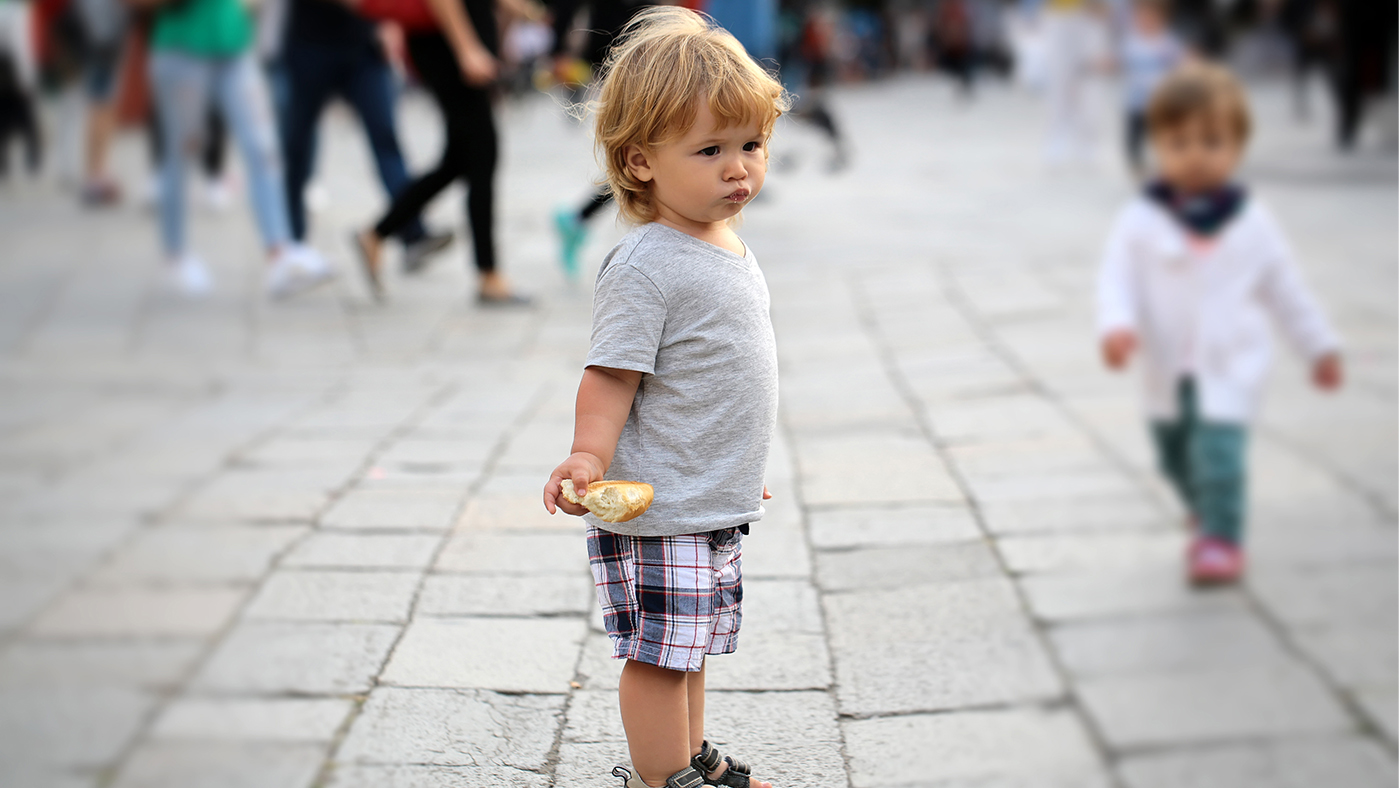Looks around and can pick out a familiar person in a group of people

Your child’s vision will have had similar clarity to that of an adult for some time now, and they will have been noticing things that are further away for a while now. They are still developing the skills to process and think about what they see, and you might notice that they are able to find a familiar person amongst a group of people.
What is visual perception?
Visual perception describes the sensory and cognitive processes that enable us to understand the things that we see. [1] Often this is a subconscious process in which information is combined and gives us an understanding of what we can see. For example, when we look at an object in the distance, we are aware of roughly how far away it is and will also know if it is big or small. Sometimes when you see something unexpected you might be more aware of processing what you see and might do things such as move your head, move further away or change position to help you interpret what you can see. When you think about your child and what they do when they see something new or unfamiliar you might notice they use some of the same approaches, perhaps also touching the object to bring together information from their sense of touch and vision to learn about the object.
Visual scanning and figure-ground recognition
When your child finds a person amongst a group they are using and practising their visual skills, particularly the skills of visual scanning and figure-ground recognition. Your child will find this easier at first when looking for a person amongst a smaller group and will find it harder with more visual distractions.
When looking for someone amongst a group of people your child needs to use their eyes to look across the group, this is known as visual scanning. Your child will also be developing their skills to follow a moving object with their eyes which is known as visual tracking. [1]
In order to recognise one person amongst a group of people, your child has to select the information they need and bring their visual attention to that person. This ability to focus on and select the information that they need is known as figure-ground recognition and is a skill your child uses in a range of situations such as picking a toy out of a toy box, looking for you when you are at the park or finding their favourite book in the book box.
What next?
Your child will develop their visual perceptive skills over time as they practise these skills in different situations and as their cognitive skills develop and they are able to control their attention. This will be a gradual process and their visual perception with continue to develop for several years.
References
[1] Schneck, C.M. (2010) Visual Perception. In Case-Smith, J. & O’Brien, J.C. (Eds.) Occupational Therapy for Children (6th edn.), Elsevier, 373-403.